
What is it?
The Saab 9-3 is a very, very strange car to try to analyze. Saab, as a Swedish brand (may they rest in peace), was readily lumped in with Volvo by US car buyers, and it was easy to see their products as sensible and stylish, if a bit odd, family cars. Merely sitting inside the 9-3 dispels any illusions that this might be the case. The problem then is that Saab always made cars that did look like sensible family drivers-they had recognizable, but understated styling, good-sized interiors and doors, and didn't make too much noise or show off too aggressively. Make no mistake, the Saab 9-3 is a car that's palatable for Americans, but doesn't give up one bit of its Scandinavian user experience.
What is it like?
Walking around the Saab 9-3 exposes very little of the experience it actually holds, save for its extremely low stance. The 9-3 wagon has conventional lines with sloping contours that give it a tapered, knifelike edge, and serve to make it look more exciting than the often blocky looks of contemporary mid-2000s wagons. The 9-3 is a larger midsize car, meaning that it offers generous space in the boot and backseat for cargo and passengers, and its front seats are well adjustable and quite comfortable, finished in leather rather than hard cloth.
The 9-3 starts being a memorable car the instant the driver goes to start it; Saab forwent a toothed, metal key in favor of a strange plastic...thing, that slots into a ignition switch just behind the console shifter. Saab realized that the electronic immobilizer does far more to protect the car than mechanical locks do, and deleted the mechanical portion entirely. In terms of user experience this causes no problems, but represents a strange halfway between conventional key ignition and keyless "in-the-pocket" ignition systems like later upper-model cars.
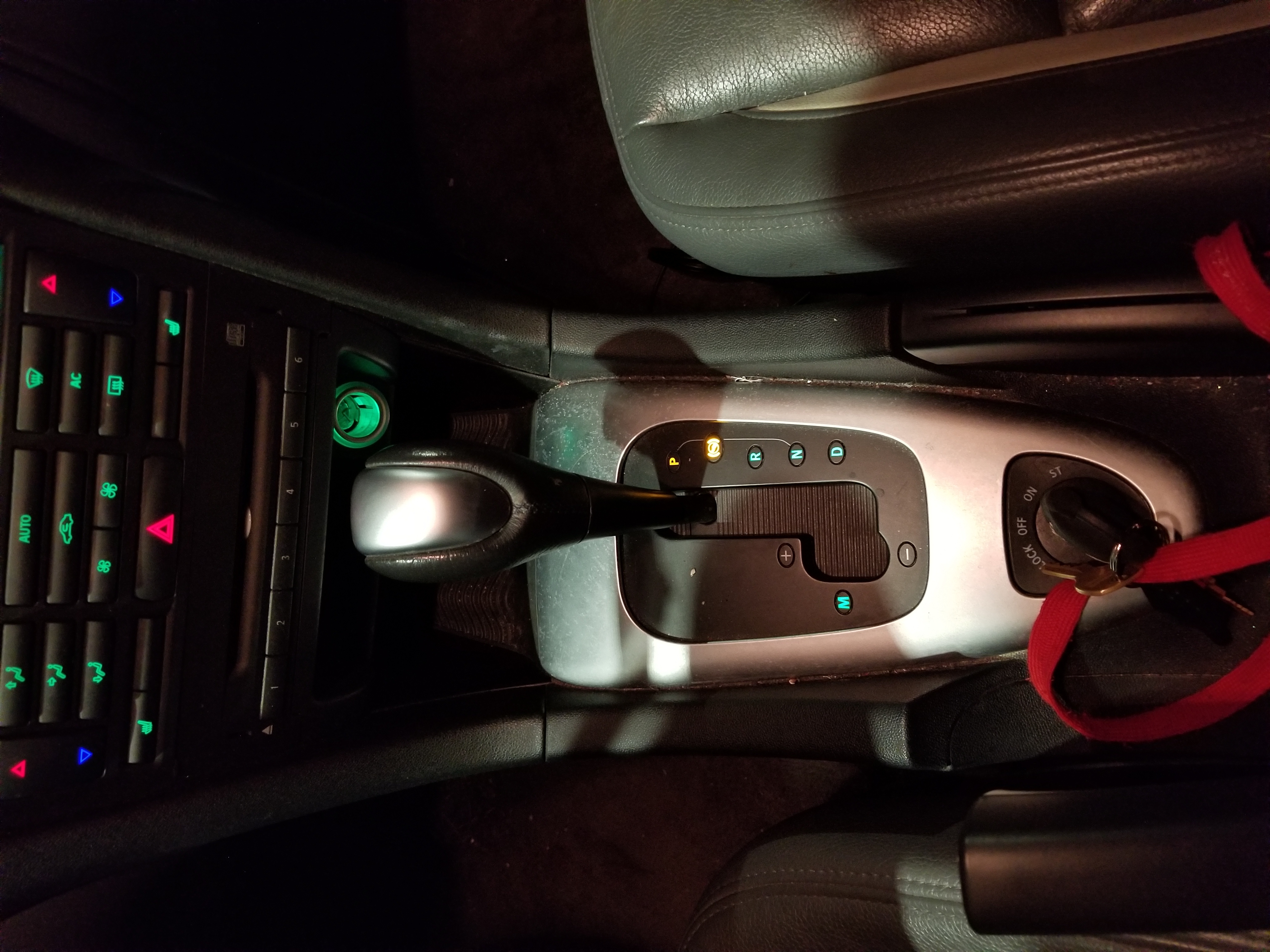
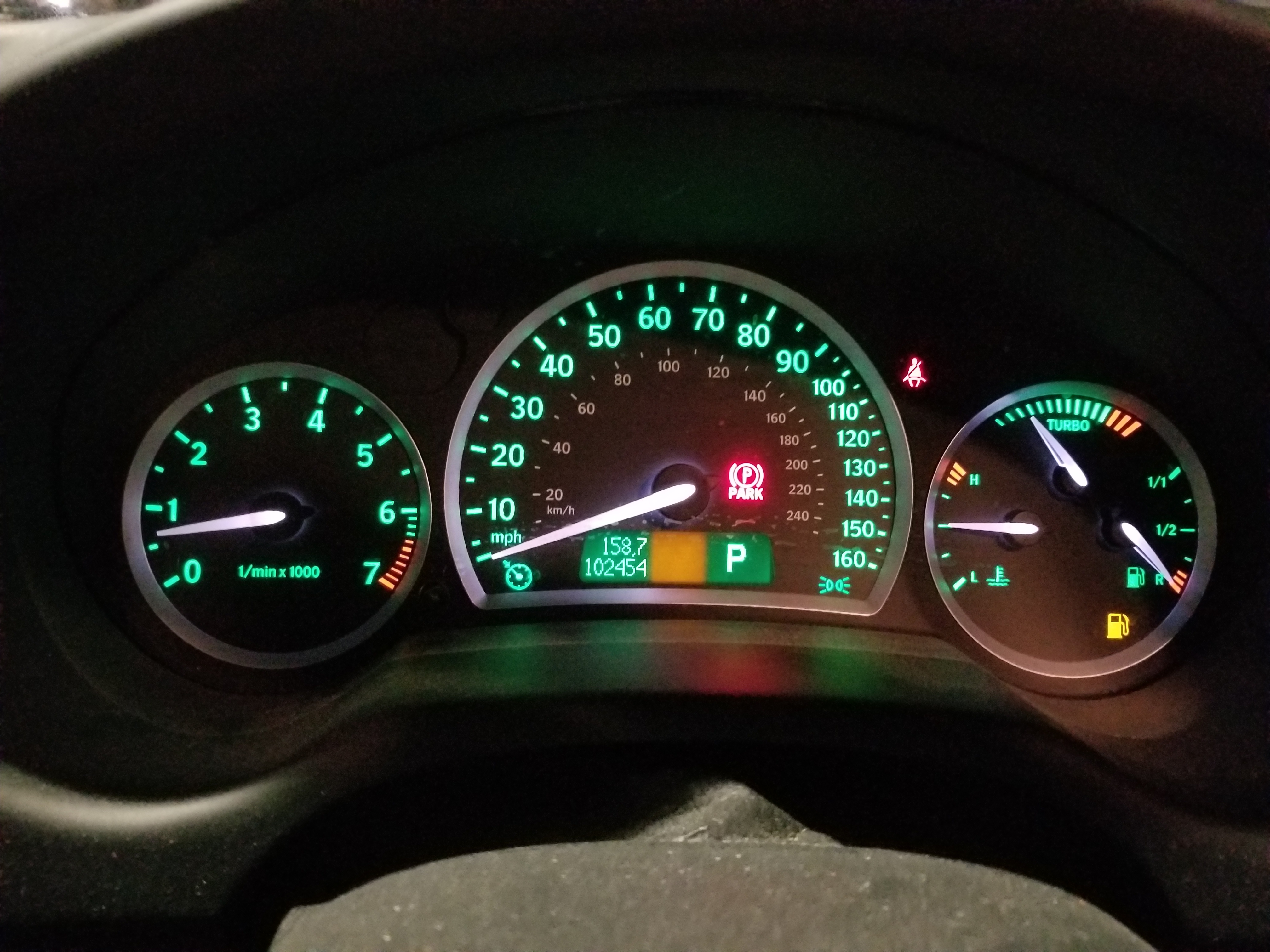
Saab also put their imagination to work in the cockpit controls of the 9-3. The use of "cockpit" instead of "dashboard" is purposeful; Saab recalls their aerospace heritage with the Aero trim, and the dashboard, HVAC/stero console, and center console are all designed to envelop the driver in a control system that might as well be in the cockpit of a Viggen or Gripen fighter. The clock is in a heads up display-like secondary display set well back on the dashboard, and the handbrake blends into the center console styling when not in use, keeping out of the way of any coats or scarves (or flightsuit) the driver might be wearing.
Few cupholders are present, and even fewer are visible, reflecting Saab's European belief that someone couldn't possibly need more than one cup at once. The star of the show here is of course the elaborate and beautifully designed retractable cupholder that stows horizontally flat inside the dashboard and extends under spring tension at a touch, unfolding itself into a minimal, but effective cupholder. Another push gets it out of the way of the stereo controls, which are of course quite extensive.
The 9-3's entertainment and communications suite (I am certain that Saab would bill them as avionics if they could) is more 1996 than 2006, as all the necessary tuner, equalizer, telephone, other functionalities are accessed with their own buttons rather than through menus. The 9-3 has an entire phone keypad on the dashboard, as well as call buttons on the steering wheel; before voice-controlled smartphones and Bluetooth car connectivity, placing a call in the 9-3 must have been a hair-raising experience! Other special touches of Saab weirdness include a blank button that can be manually configured by the user to be connected to any number of functionalities, and a "night panel" button that turns off the backlight on nearly everything but the speedometer (this truly mystifies me, but for long night hauls on the highway, having fewer distracting lights is surely a good thing). The configurable button could engage perhaps a bass boost, or foglights, or wastegate operation, or really anything the user could connect to that switch. More cars need one or two configurable buttons, even if they have to be made functional through hands-on work. In the day of increasingly screen-dependent infotainment systems, having a configurable button is a very thoughtful touch for the user experience.
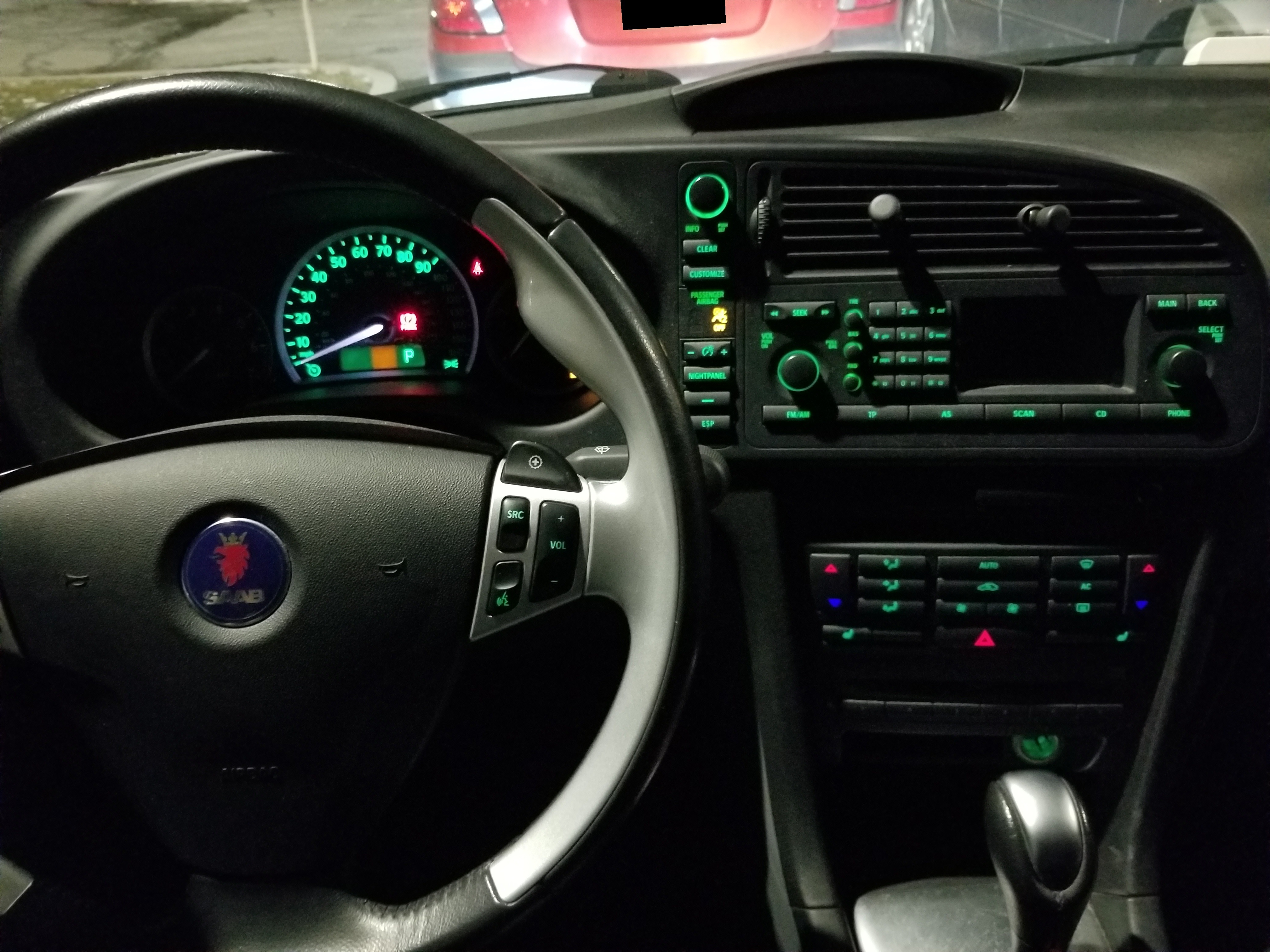
The 9-3 has a dashboard and steering wheel as complicated as any modern luxury car might; the boost gauge is a nice touch, and thumb buttons can be used to control the manual shifts as well as bumping the shifter lever itself; while these buttons on the wheel and therefore are necessarily inaccessable as soon as the hands are taken off 10 and 2, such as in a tighter turn, they are quite convenient for shifting on straights and gentle turns. The automanual mode is an advanced feature for a 2006 car, as is the six-speed automatic transmission, and leads to a very modern driving experience.
How does it drive?
The powertrain of the 9-3 feels like that of a car that is a decade newer. The engine keeps a dignified rumble for the most part, but its roar is both noble and quite apparent as soon as power is demanded. Turbo noise is negligible, and I couldn't hear it at all over the 2.8L V6's noise. The engine's power delivery is butter smooth and passing torque is available at any engine speed or gear, and boost bolsters that power as soon as revs pass about 3000-3500 rpm. Depending on boost, the 9-3 Aero should develop about 250hp, which is more than enough for nearly all reasonable purposes. Passing in the 9-3 is as simple as putting your foot down; downshifting obviously helps, but power comes on so quickly and predictably that it isn't really necessary.
The transmission is not a hypermiling beast like so many later cars' are; instead, it makes shift decisions that keep engine power available, if in check. The transmission does not short shift when accelerating, and it isn't afraid to let the engine speed up; this is just as well, as a modern transmission that jealously guards 3000rpm wouldn't make good use of the turbocharger. Transmission kickdowns are mostly predictable, if a little late, but shifting to manual and downshifting as you apply power is both easy and very smooth.
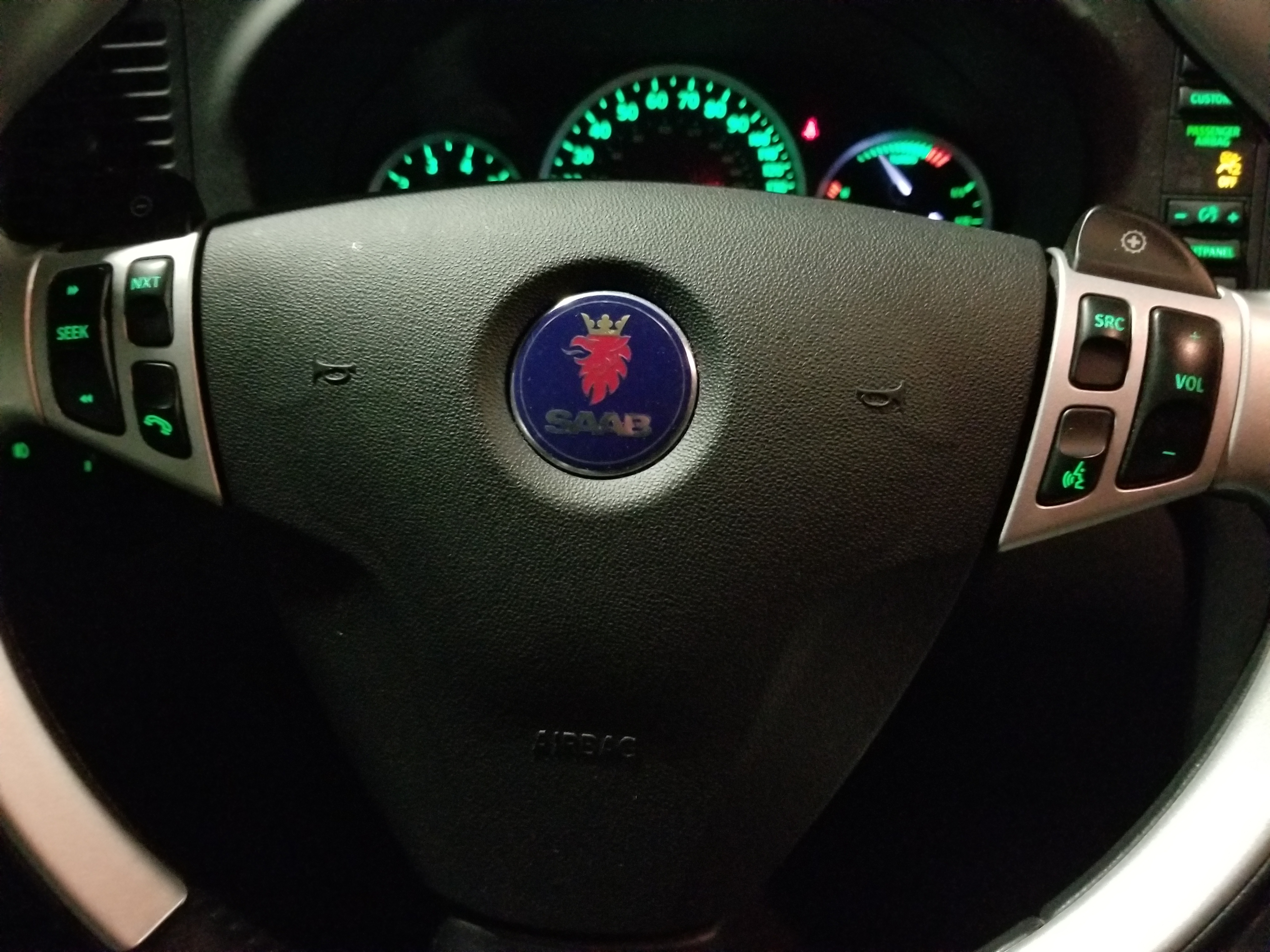
The throttle response is quite well tuned; some cars demand a light foot when starting off but then respond lethargically to pedal pressure once moving; the 9-3 is quite the opposite, being easy to drive smoothly, but nicely responsive as well. Brake pedal response is unfortunately very different. The 9-3 feels light on acceleration but SUV-heavy on braking; maximum braking force is generous but a lot of pedal travel is necessary to get that. Plainly put, the 9-3 loves to accelerate, loves to rev, and loves to cruise, but hates to slow down. As such, the 9-3 driver really needs to be looking four cars ahead at all time, as they need all the advance warning they can get in order to avoid last-second braking.
Fortunately, the 9-3 is quite capable of handling any corners the driver might wish they had slowed down more for. The suspension manages the car's weight very well, and body roll is negligible and there is no shakiness in the wheel braking into and accelerating out of turns. I would have to push the 9-3 beyond my skill level in order to get it to break a sweat in corners. Additionally, torque steer is hard to notice on heavy accelation; no real wheel correction is necessary when peeling out from a stop. The tradeoff of the great driving dynamics is the low stance and stiffness of the suspension; steep driveways pose a greater danger to the 9-3's bumper than crashes do, and the wonderful lateral acceleration of the 9-3 is well put to use avoiding deep potholes and manhole lids. The 9-3 has the interior and features of a luxury car, and its smooth power delivery is certainly professional as well, but its hard suspension is more reminiscent of a shouty street rocket than an executive runabout. The 9-3 is not recommended for anyone with sensitivity to bumps and knocks, unless they raise and soften the suspension, which could be difficult at best and nearly impossible at worst.
The true tradeoff to the driving dynamics are the cosmic-scale turning radius and rear visibility; its advanced-for-the-time rear parking warning sensors are necessary rather than convenient due to the shallow rear window and thick D-pillars, and many point turns are required for maneuvering in small parking lots. The 9-3 driver will spend a lot of time apologetically doing 3- and 4-point turns, though they'll look stylish doing them.
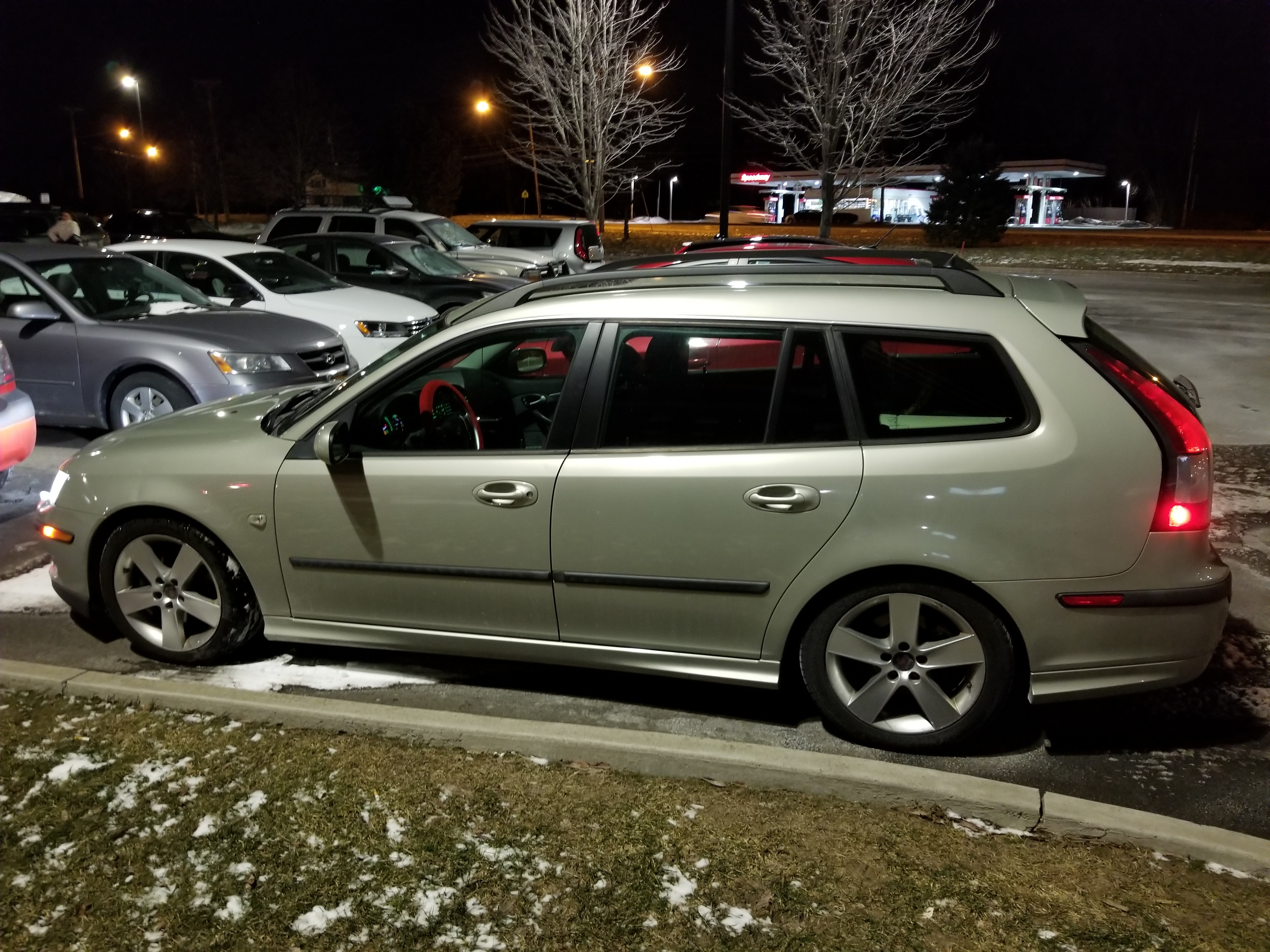
The Saab 9-3 has a predictable engine that can dish up torque at any time, boost pressure waiting in the wings, a surprisingly aggressive suspension that tackles corners confidently but amplifies even the smallest bumps, and surprisingly weak brakes for its shape and size. Couple that with a very low stance and extensive internal space and features, it's a strange combination of urbane family wagon and aggressive grand tourer. Another parallel does come to mind, however: the LX/LD-platform Dodge Charger, with its (standard) V6 engine, comfortable interior appointments, and generous cabin room, does in some way feel like a different approach to the same design concept that the 9-3 was looking at. In 2006, the V6 Charger (or even better, its wagon version, the Magnum) made either 190 or 250hp depending on options, meaning that this generation of 9-3 could pull with Dodge's classical muscle car. Is the 9-3 a muscle car? Of course not! But there is certainly a note of muscle-car feel in the way it drives and especially the way it accelerates. But then again, the 9-3 doesn't try to be the same car as the Magnum; it has no reason to do so. The Magnum sells not only its power and (relative) practicality, but also its masculine, angular lines, and high-power, steel-jacketed name. By comparison, the 9-3 is polite, even formal, and courts families and executives more readily; these are people who prefer "practical Scandinavian car with muscle when you need it" over "burly police cruiser-adjacent that's named like a Smith & Wesson product".
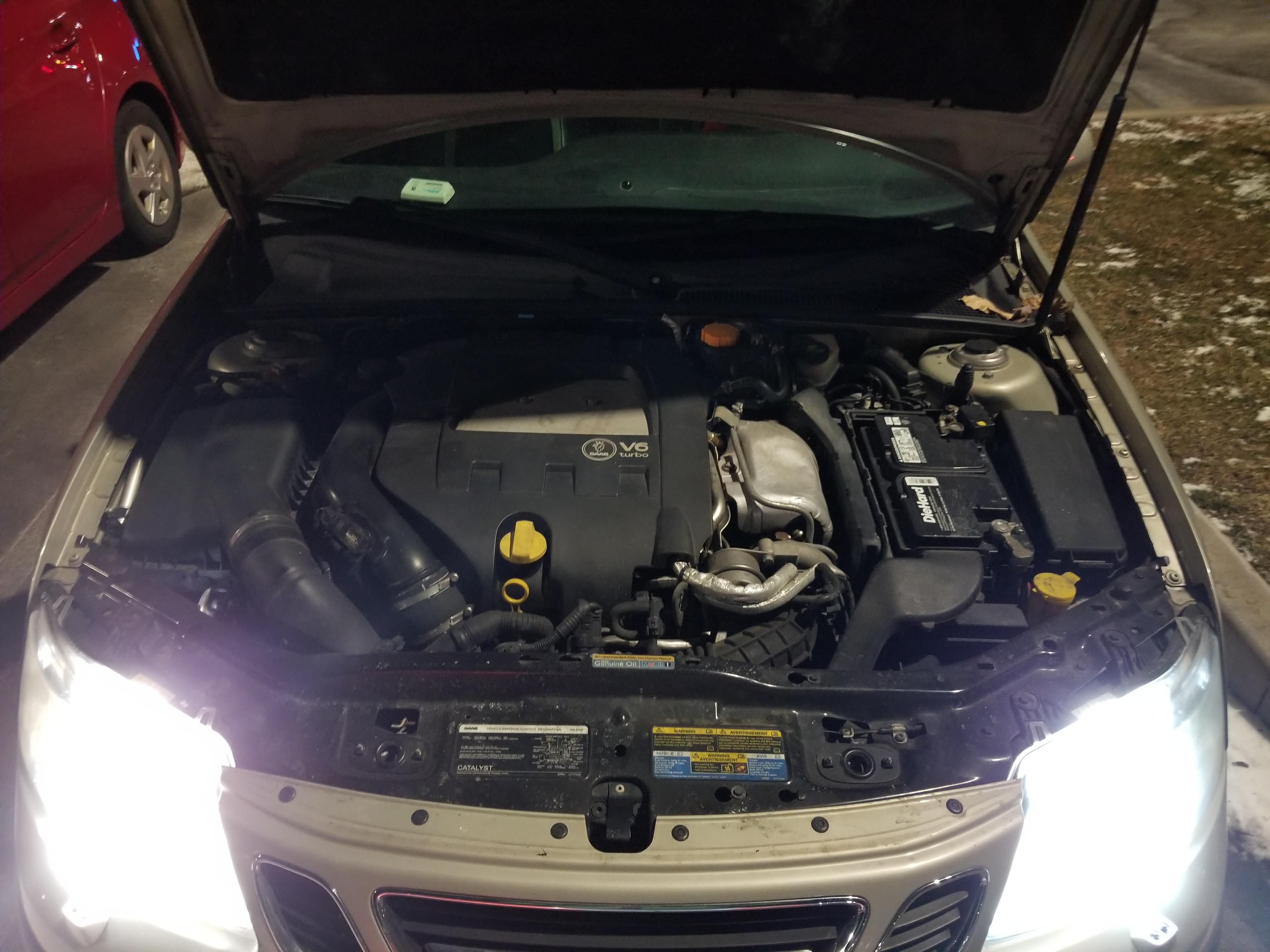
Who is it for?
The Saab 9-3 wagon is for the dad who has used the same amplifier with his hi-fi system for the last 25 years, and who still has a collection of chrome cassettes. He needs a car that can haul the kids and their gear around, and that has docile enough driving for him to not worry when the oldest needs to learn to drive. The 9-3's solid stereo and effortless highway driving makes commutes pleasant and quiet, but its hard, low suspension prevents it from being a true city driver that can soak up potholes and expansion joints. The firm suspension and extremely low stance prevent the 9-3 from appealing to older buyers, but the high price tag can dissuade younger ones. The 9-3 tries to be all things to all people, and in the process, just ends up being good old Saab weird. On smooth highways, the 9-3 is a great highway cruiser, with a high top speed, low wind noise, and flat cornering and fast acceleration. With its turbo V6, it's a good sleeper too, at least by "slow car" standards. On smaller roads, its tough suspension and loose brakes are concerning, and in cities, its wide turning circle is just straight up disappointing.
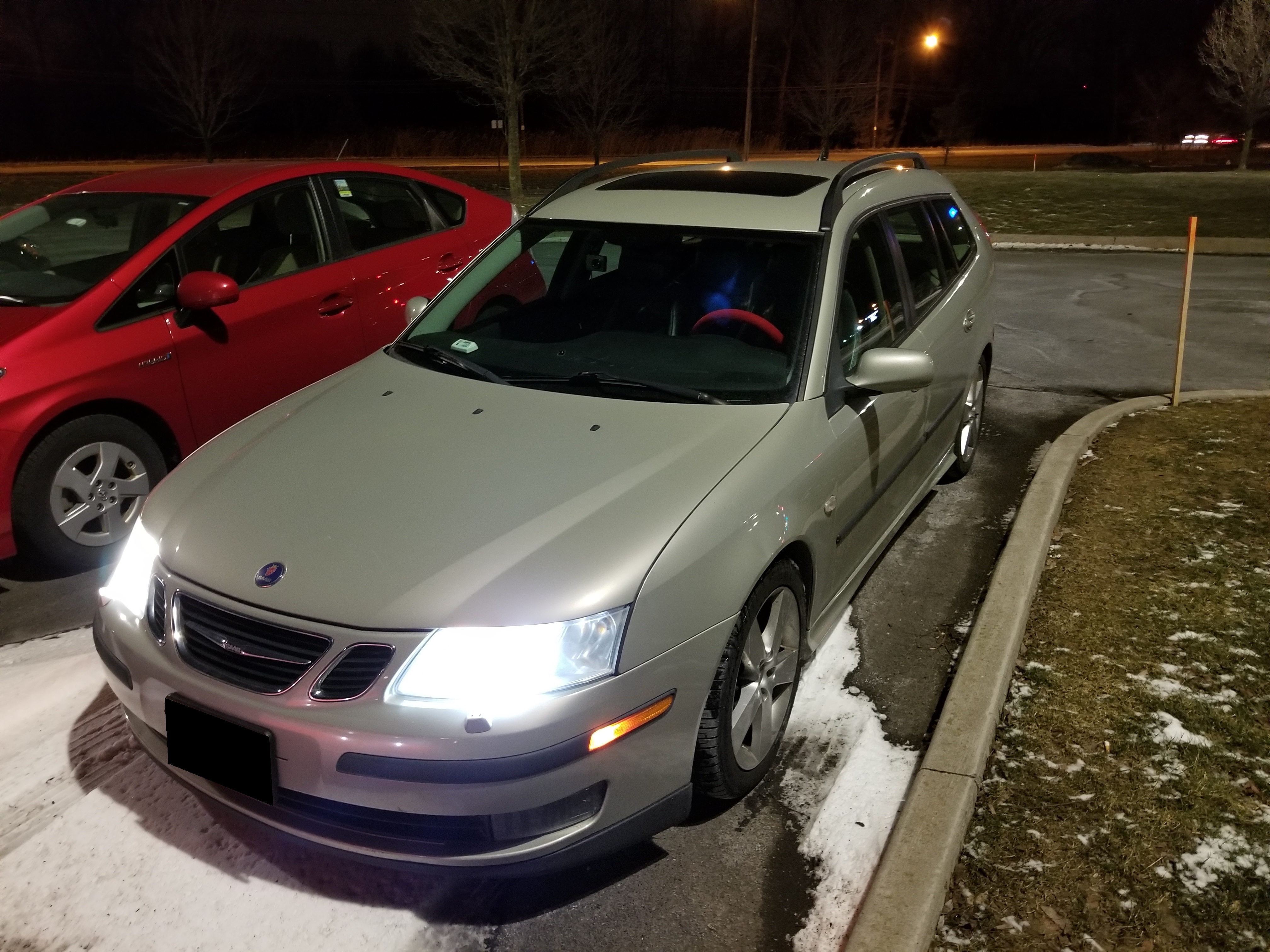
If you love cars, then you'll love the 9-3. The 9-3 is the car for someone who respects what it is and what it does, and doesn't worry too much about Saab's strange visions of a luxurious but sporty grand tourer wagon. The 9-3 is not an urban car, but it isn't a countryside car either; it's a solidly suburban car for the middle-class family that demands expensive performance and quality but really just needs space and comfort. The 9-3 is what the American middle class gave up when they turned towards crossovers, and the 9-3 is everything that modern family cars miss.
Long live station wagons.